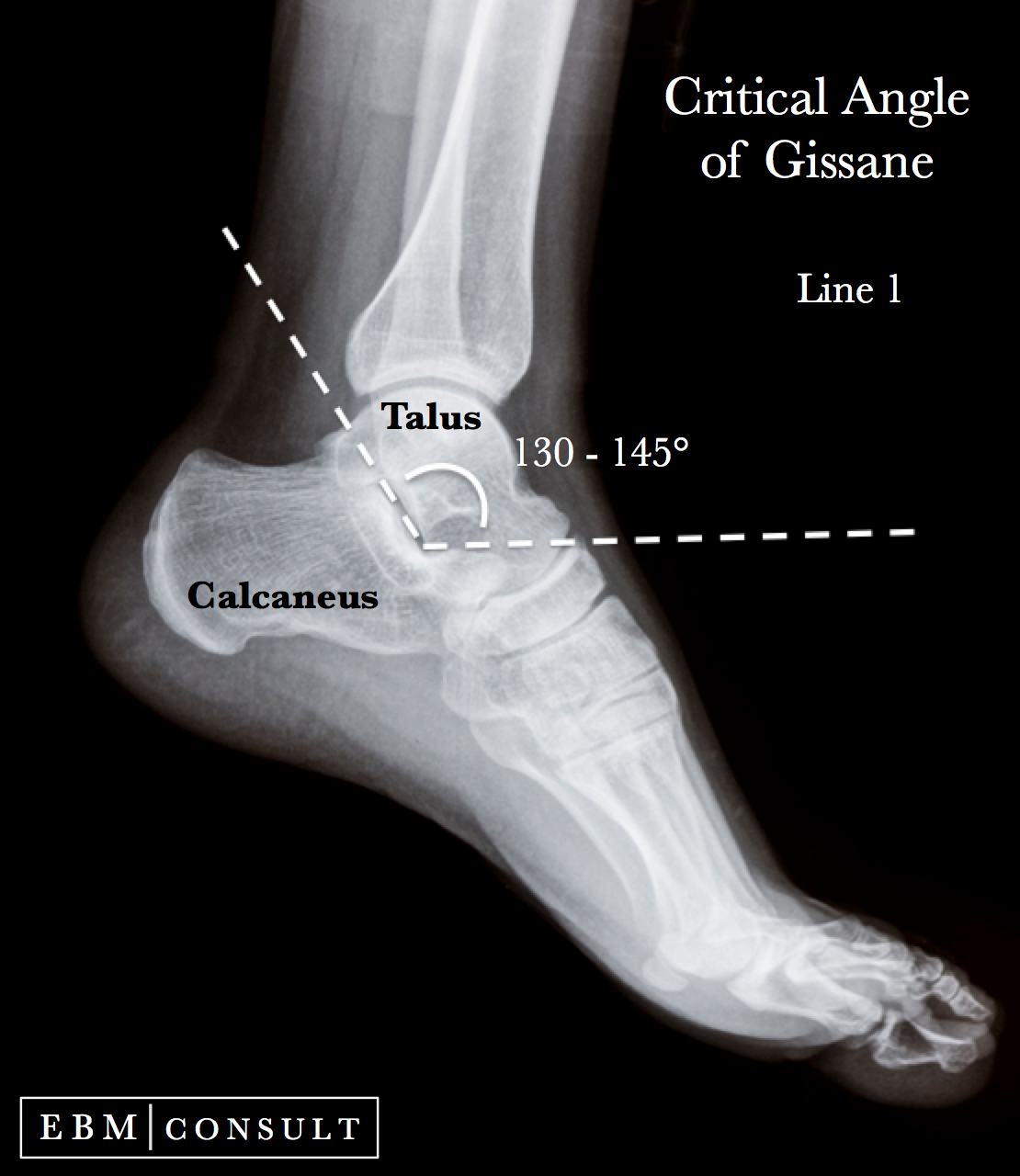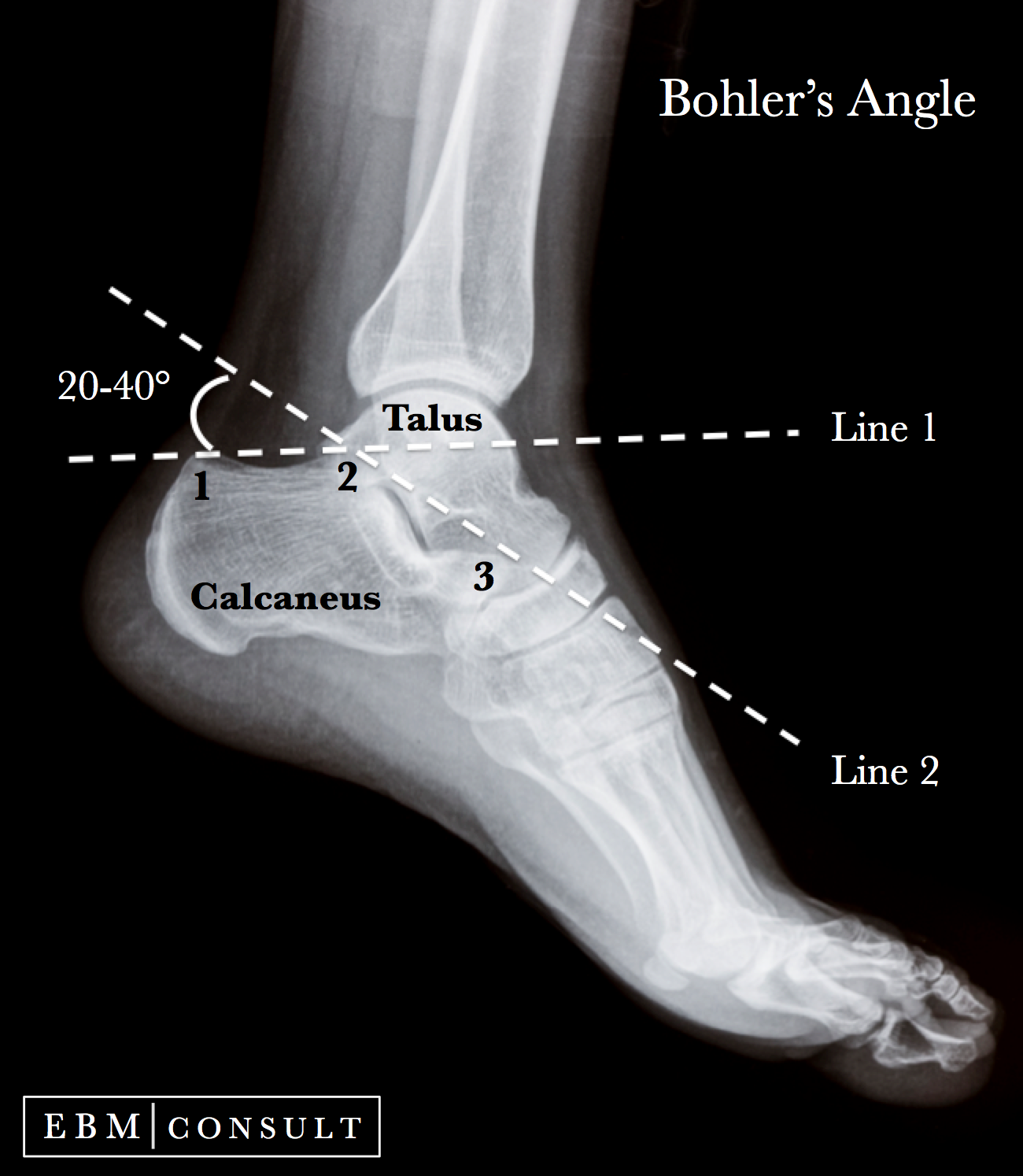Critical Angle of Gissane: How to Use in the Diagnosis of a Calcaneus Fracture
|
|---|
- The normal range is 130-145 degrees
- An angle > 145 degrees is concerning for calcaneus fracture with involvement of the posterior talar articular surface
- Based on a single-center, randomized, blinded, case-control study of 133 patients seen in the emergency department compared to the use of Bohler's angle, the critical angle of Gissane is not as helpful for determining the presence of a calcaneus fracture. However, clinicians will still use it as part of the overall assessment of the patient. If the diagnosis is not clear as CT scan of the ankle should be done.
- For details on studies related to this click here
- Knight JR et al. Boehler's angle and the critical angle of Gissane are of limited use in diagnosing calcaneous fractures in the ED. Am J Emerg Med 200924(4):423-7. PubMed
Critical Angle of Gissane
Gissane's angle is also known as the crucial or critical angle and can be used to help determine the presence of a calcaneus fracture on a radiograph.
Lines for Angle
The lines for determining the critical angle of Gissane extend through the posterior talar articular surface (between the calcaneus and the talus) and angles at the point of the tarsal sinus over towards the highest point of the anterior surface for the cuboid bone. This angle should be between 130-145 degrees.
Clinical Data
References



